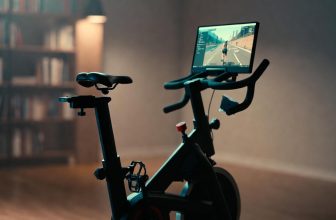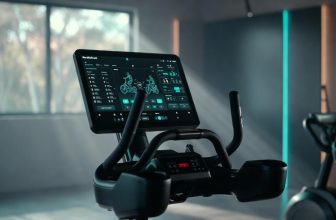Table of Contents
- Do Incline Treadmills Work?
- Benefits of Incline Treadmills
- Enhanced Calorie Burn and Weight Loss
- Muscle Building and Toning
- Cardiovascular Improvements
- How Incline Treadmills Work: Science Behind the Slope
- Incline Treadmill vs. Flat: A Direct Comparison
- Sample Incline Treadmill Workouts
- Common Myths About Incline Treadmills
- Safety Tips and Potential Risks
- FAQ
- Final Thoughts
- About Author
- Mariar Fernandez
As an Amazon Associate, I earn from qualifying purchases.
Do Incline Treadmills Work?
Do Incline Treadmills Work? Yes, incline treadmills effectively boost calorie burn by up to 113% at 10-12% grades, strengthen lower body muscles like glutes and quads, and enhance cardiovascular health, per studies in Journal of Biomechanics and Gait & Posture.
Benefits of Incline Treadmills
Incline treadmills simulate uphill walking or running, forcing your body to work harder against gravity. This low-impact cardio option burns more calories than flat walking, targets key muscle groups, and improves endurance without high joint stress. A 2021 study found that 10-16% inclines better engage full-body muscles and elevate heart rates compared to 0% grades. Ideal for home or gym use, they suit beginners to athletes seeking variety.
Enhanced Calorie Burn and Weight Loss
Walking or running uphill torches calories efficiently. At a 5% incline, you burn 17% more calories than flat walking; at 10%, it jumps to 32%, according to Journal of Biomechanics research. For a 150-pound person, a 30-minute session at 3 mph and 12% incline can expend 300-400 calories, rivaling moderate running.
- 5% incline: +52% metabolic cost vs. flat.
- 10% incline: +100% calorie burn, per Harvard Health data.
- 12% incline (12-3-30 workout): 113% more calories than flat, as shown in PLOS ONE studies.
This makes incline walking a top choice for fat loss, especially for those avoiding high-impact runs. For deeper insights on treadmill calorie calculators, check Harvard Health’s treadmill guide.
Muscle Building and Toning
Incline workouts shift focus to posterior chain muscles. A Gait & Posture study revealed 635% quad activation, 345% glute engagement, and 175% calf use at 9% inclines. Glutes and hamstrings fire up more than in flat running, building lean mass.
Key Muscles Targeted:
| Muscle Group | Activation Boost | Benefit |
|---|---|---|
| Quads | 635% at 9% incline | Stronger thighs, better knee stability |
| Glutes | 345% at 9% incline | Toned posterior, improved posture |
| Calves | 175% at 9% incline | Enhanced ankle strength, reduced injury risk |
Regular use (3-5 sessions/week) increases muscle endurance, aiding daily activities like climbing stairs. “Incline walking transforms cardio into resistance training,” notes trainer April Gatlin.
Cardiovascular Improvements
Elevated inclines spike heart rates quickly. A 2013 study showed 2-7% inclines raise heart rate by 10% vs. flat surfaces. This boosts VO2 max, lowers blood pressure (10% inclines yield better results than 5%), and cuts heart disease risk.
Beginners see endurance gains in weeks; advanced users hit fat-burning zones faster. Pair with Mayo Clinic’s heart health tips for optimal results.
How Incline Treadmills Work: Science Behind the Slope
Treadmills adjust incline from 0-15%, mimicking hills by elevating the front deck. At higher grades, gravity demands more energy—metabolic cost rises exponentially. A 2015 Journal of Biomechanics study confirmed 17-33% extra calories at inclines, due to increased stride length and muscle recruitment.
Unlike flat walking, inclines reduce forward propulsion needs, emphasizing vertical lift. This engages hip extensors more, per Gait & Posture findings. Cushioned belts absorb impact, making it joint-friendly—perfect for knee osteoarthritis, as a 2014 study in Gait & Posture showed benefits for replacements.
Incline Treadmill vs. Flat: A Direct Comparison
| Aspect | Flat Treadmill | Incline Treadmill (5-10%) |
|---|---|---|
| Calorie Burn (30 min, 3 mph, 150 lb) | ~150-200 calories | ~200-350 calories |
| Heart Rate Increase | Baseline | +10-20% |
| Muscle Focus | Quads, minimal posterior | Full lower body, core |
| Joint Impact | Low | Low, but higher back strain possible |
| Weight Loss Efficiency | Moderate | High, +50% burn at 5% |
Flat suits steady-state cardio; inclines excel for intensity. A 150-pound person burns 224 calories/mile at full 15% incline vs. 111 calories/mile jogging flat. For visual breakdowns, explore Verywell Fit’s incline calorie tool.
Sample Incline Treadmill Workouts
Incorporate these 3x/week for results. Warm up 5 minutes at 0% incline, 2-3 mph.
- Beginner Steady Build (20 min): Start at 2% incline, 2.5 mph for 5 min; increase 1% every 2 min to 6%. Cool down at 0%. Burns ~250 calories; builds stamina.
- 12-3-30 Viral Workout (30 min): 12% incline, 3 mph steady. Targets fat loss; 113% calorie boost vs. flat.
- HIIT Intervals (25 min): 1 min at 8% incline, 4 mph; 2 min recovery at 1%, 2.5 mph. Repeat 8x. Maximizes afterburn.
- Strength Focus (20 min): 10% incline, 2.5 mph for 45 sec holds (power walk); 1 min easy at 2%. Builds glutes/quads.
Vary weekly to avoid plateaus. Track progress with apps like those from Peloton’s incline guide.
Common Myths About Incline Treadmills
- Myth: 1% incline always mimics outdoor running. Fact: Only for speeds >7 mph; slower paces need no adjustment, per biomechanics expert Casey Kerrigan. Constant 1% risks overuse injuries.
- Myth: Holding handrails is safe. Fact: It negates incline benefits and strains shoulders; use for balance only, advises Runner’s World.
- Myth: Incline ruins form or weakens muscles. Fact: No evidence; biomechanics match overground running, per Miller et al. review.
Safety Tips and Potential Risks
Incline workouts are safe with precautions, but risks include shin splints, Achilles strain, and lower back pain from steep grades.
Risks:
- Joint/Tendon Overload: High inclines (>10%) boost shin/calf stress; 2% increases heart rate significantly, but 15% risks fatigue.
- Back Strain: Leaning forward tenses hips; affects chronic pain sufferers.
Tips:
- Start low (2-5%); build 1% weekly.
- Wear supportive shoes; never barefoot.
- Maintain posture—core engaged, arms swinging.
- Alternate flat/incline; rest if sore.
- Consult doctors for heart/back issues.
For comprehensive safety, see Healthline’s incline walking precautions.
FAQ
Q: What’s the best incline for beginners?
A: 2-5%; it raises heart rate without overload, burning 20-50% more calories than flat.
Q: How often for weight loss?
A: 3-5 sessions/week, 20-30 min. Combine with diet for 1-2 lb/week loss.
Q: Does incline build muscle like weights?
A: Yes, for lower body; 9% activates glutes 345% more, but add resistance training for full gains.
Q: Is it safe for knees?
A: Yes, lower impact than running; benefits osteoarthritis per 2014 studies, but ease in if injured.
Q: 12-3-30 vs. running—which burns more?
A: Comparable; 12-3-30 favors fat loss via lower intensity, but running suits speed lovers.
Final Thoughts
Incline treadmills deliver proven results—higher burns, stronger muscles, better hearts—without flat routine boredom. Start simple, stay consistent, and listen to your body for sustainable gains. Whether chasing weight loss or endurance, this versatile tool elevates every step.







